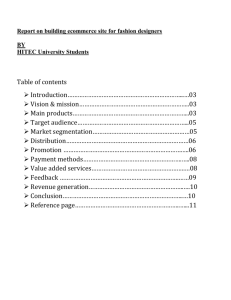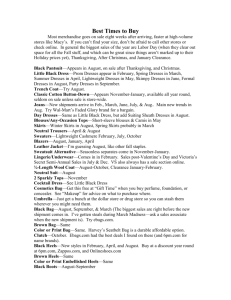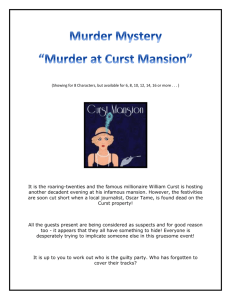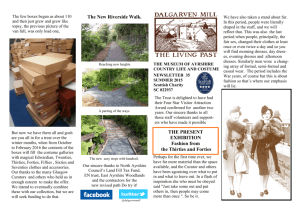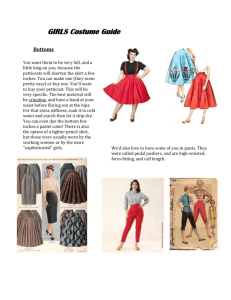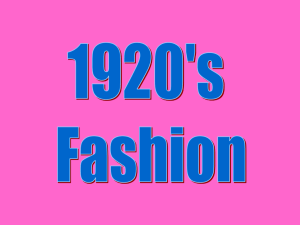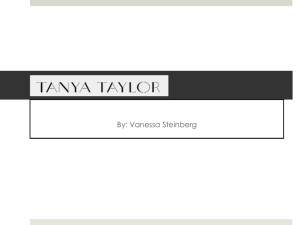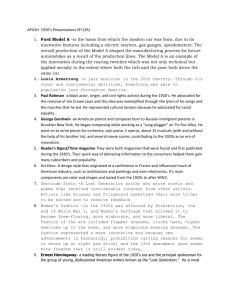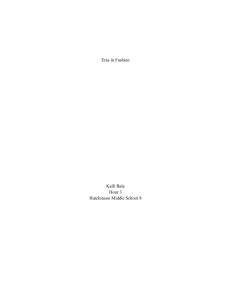Target group
advertisement
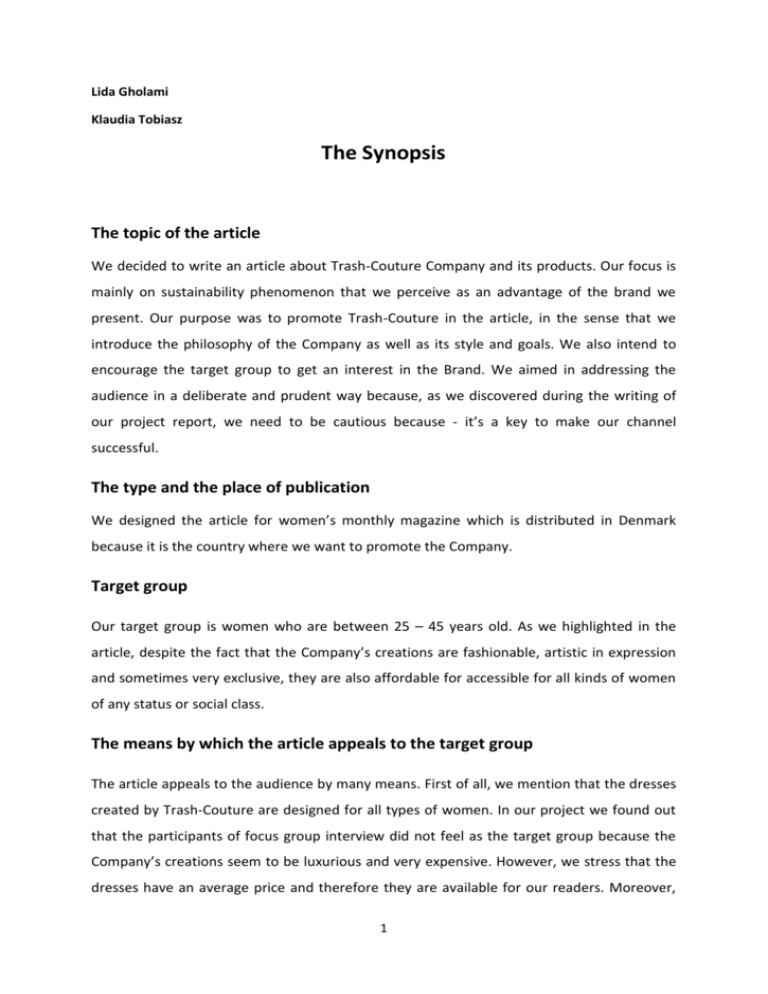
Lida Gholami Klaudia Tobiasz The Synopsis The topic of the article We decided to write an article about Trash-Couture Company and its products. Our focus is mainly on sustainability phenomenon that we perceive as an advantage of the brand we present. Our purpose was to promote Trash-Couture in the article, in the sense that we introduce the philosophy of the Company as well as its style and goals. We also intend to encourage the target group to get an interest in the Brand. We aimed in addressing the audience in a deliberate and prudent way because, as we discovered during the writing of our project report, we need to be cautious because - it’s a key to make our channel successful. The type and the place of publication We designed the article for women’s monthly magazine which is distributed in Denmark because it is the country where we want to promote the Company. Target group Our target group is women who are between 25 – 45 years old. As we highlighted in the article, despite the fact that the Company’s creations are fashionable, artistic in expression and sometimes very exclusive, they are also affordable for accessible for all kinds of women of any status or social class. The means by which the article appeals to the target group The article appeals to the audience by many means. First of all, we mention that the dresses created by Trash-Couture are designed for all types of women. In our project we found out that the participants of focus group interview did not feel as the target group because the Company’s creations seem to be luxurious and very expensive. However, we stress that the dresses have an average price and therefore they are available for our readers. Moreover, 1 our conducted research within the project showed that the pictures depicting models on catwalk may have a discouraging effect on potential consumers. That is why, in order to promote the dresses and possibly make our target group willing to make the purchase we used the photo with nature in the background. We want to show our audience – both through the photo and included facts about the philosophy of Trash-Couture – that the Brand is sustainable and we want that to be perceived as an advantage. The woman presented on the photo is wearing the dress by Trash-Couture so we want the target group to get to know the products a little bit more. The second picture depicts atelier in Copenhagen about which we mention. Both photos are in black and white in order to highlight the vintage style. Another mean to do that is the use of language. The numerous adjectives are supposed to help the reader to imagine which style is followed by the Brand. Furthermore, we use quite simple language, inserting sometimes creative descriptions of the dresses in order to bring the audience in the dreamy mood. We would like them to think about fashion as something pleasant. At the beginning of the article we describe a little bit cruel reality of fashion industries that are present in many western countries. By describing the reality of fashion industries we want to catch the reader´s attention. Furthermore, we want to describe the uniqueness of the company. We also want to persuade a little bit it’s ‘correctness’ in the fact of being sustainable, encouraging the audience to get an interest in Trash-Couture, in general. Moreover, we used the names of the celebrities that are the consumers of the company to influence the target group.. People may feel encouraged to make a purchase because they want to be like them (like their idol, for instance). What is more, we include the quotes of an expert in the article. It may give the impression of honesty, reliability and truthfulness to our audience. What is the target group expected to get out of the article? We want the article to appeal to the particular audience it is targeting. Our intention is to make them aware of the sustainability phenomenon in fashion industry. Showing them the dresses designed for Trash-Couture we would like to convince them that changing the attitude towards nature is worthy and valuable. The sustainable creations are not ugly as people may think at first, but just -in opposite- they are very fashionable and fancy. Our purpose was to make our audience ‘inspired by the dreamy, fairy-tale dresses to make a change, a change not only in their style but in the environment too. 2
